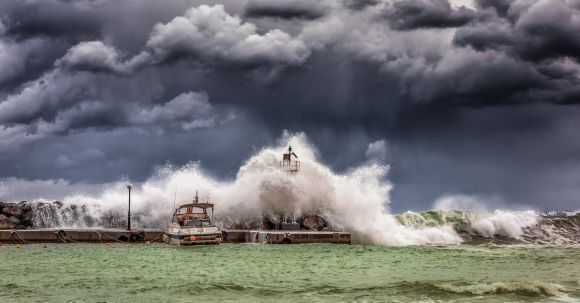Advancements in artificial intelligence (A.I.) have revolutionized many industries, and one area where it has the potential to make a significant impact is in predicting natural disasters. Natural disasters such as earthquakes, hurricanes, and floods can cause massive devastation, leading to loss of life and property. By harnessing the power of A.I., scientists and researchers are looking to improve the accuracy and timeliness of predicting these catastrophic events. In this article, we will explore the role of A.I. in predicting natural disasters and how it can help save lives and mitigate damage.
Analyzing Data for Early Warnings
One of the key ways A.I. can aid in predicting natural disasters is through the analysis of vast amounts of data. A.I. algorithms can process data from various sources, including satellite imagery, weather sensors, and historical records, to identify patterns and detect anomalies that may indicate the occurrence of a natural disaster. By continuously monitoring these data points, A.I. systems can provide early warnings, allowing authorities to take proactive measures and evacuate vulnerable areas.
Improving Weather Forecasting
Accurate weather forecasting plays a crucial role in predicting natural disasters such as hurricanes and storms. A.I. can enhance traditional weather forecasting models by incorporating real-time data and machine learning algorithms. By analyzing historical weather patterns and comparing them with current conditions, A.I. systems can make more accurate predictions about the intensity and path of storms. This information is vital for emergency response teams, enabling them to prepare and respond effectively.
Monitoring Environmental Changes
A.I. can also be used to monitor and analyze environmental changes that may lead to natural disasters. For example, in the case of earthquakes, A.I. algorithms can process seismic data to identify patterns and detect possible precursors to an earthquake. By continuously monitoring seismic activity and analyzing various parameters, A.I. systems can provide valuable insights into the likelihood of an earthquake occurring in a specific region. This information can help authorities plan and implement measures to mitigate the impact of an earthquake.
Enhancing Early Warning Systems
Early warning systems are crucial for minimizing the impact of natural disasters. A.I. can enhance these systems by integrating multiple sources of data and providing real-time analysis. For instance, in the case of floods, A.I. algorithms can analyze data from rainfall sensors, river levels, and weather forecasts to provide accurate and timely flood warnings. By combining these data points and using machine learning algorithms, A.I. systems can improve the accuracy of flood predictions and provide warnings to residents in affected areas, giving them more time to evacuate and protect their property.
The Future of A.I. in Predicting Natural Disasters
While A.I. has shown great promise in predicting natural disasters, there are still challenges to overcome. Data collection and integration from various sources remain a significant hurdle, as different organizations and systems may use different formats and protocols. Additionally, A.I. models need to be continuously updated and trained with new data to ensure their accuracy and effectiveness.
However, with ongoing advancements in technology and increasing collaboration between scientists and A.I. experts, the role of A.I. in predicting natural disasters will continue to evolve. By harnessing its potential, we can improve our understanding of these catastrophic events and take proactive measures to save lives and minimize damage. A.I. has the power to revolutionize how we predict and respond to natural disasters, and it is an area that holds great promise for the future.





